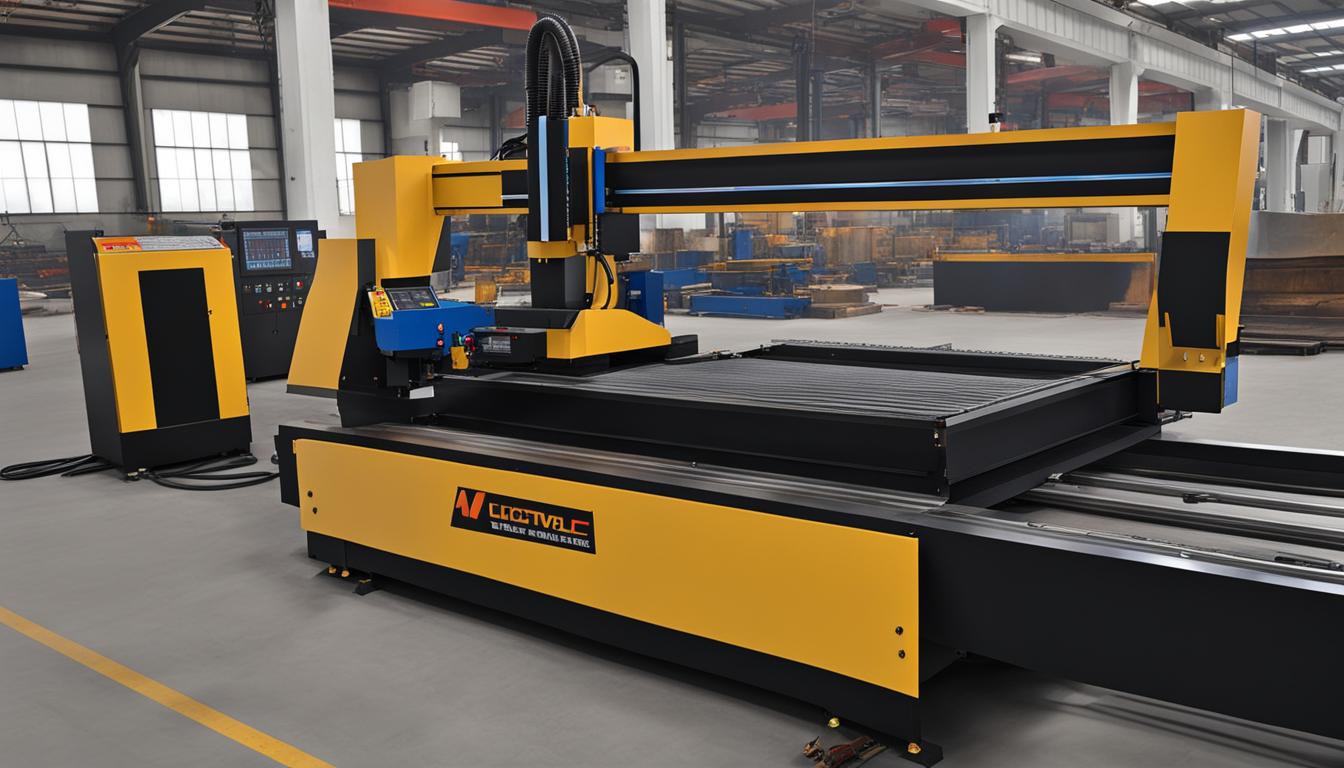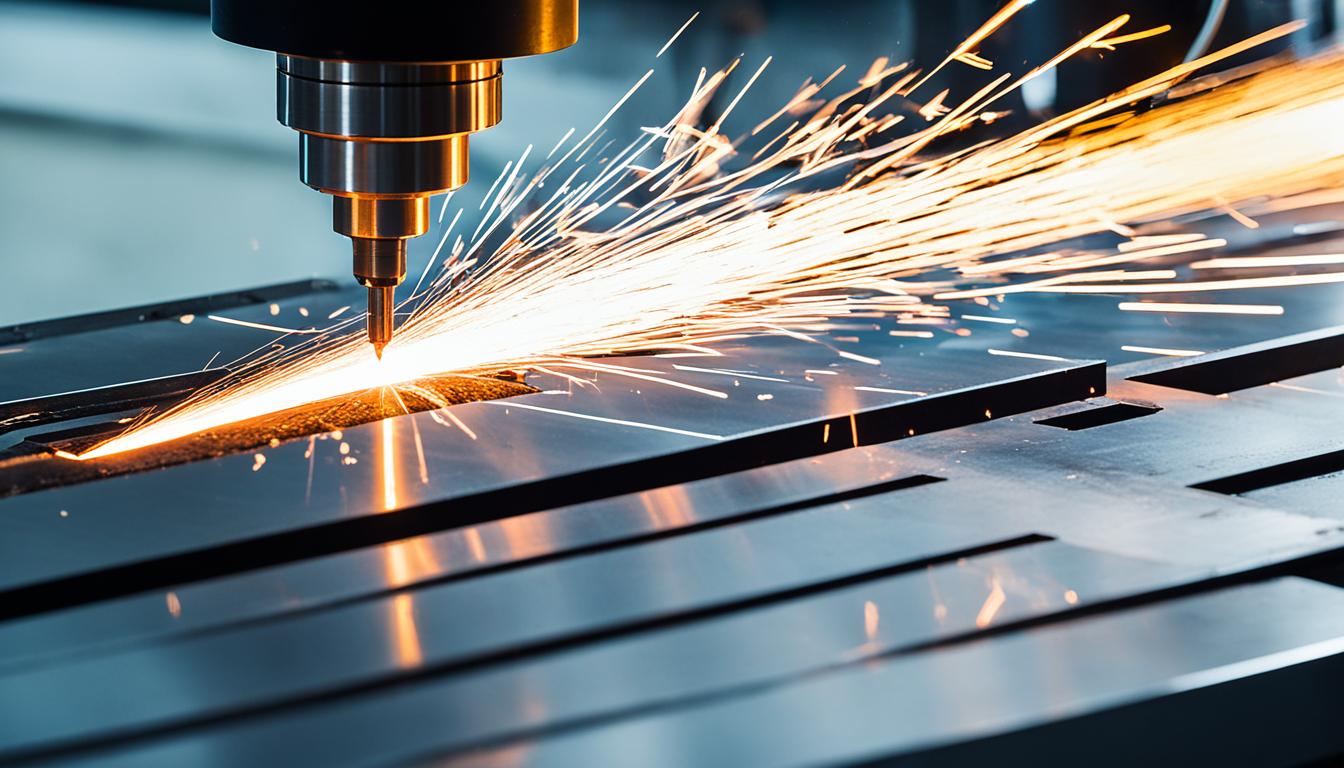CNC plasma machines are advanced cutting systems that use a high-temperature plasma arc to precisely cut through conductive materials like steel, aluminum, and copper. These machines combine Computer Numerical Control (CNC) technology with plasma cutting, allowing for automated, highly accurate cuts based on digital designs.
The plasma arc is created by ionizing a gas (such as nitrogen or oxygen) and forcing it through a narrow nozzle at high speed. This process generates temperatures up to 30,000°C, capable of melting through metal quickly and cleanly. CNC plasma cutters offer several advantages, including fast cutting speeds, the ability to cut complex shapes, and compatibility with a wide range of materials and thicknesses.
They are widely used in industries such as manufacturing, automotive, aerospace, and construction for tasks like parts fabrication, metal artwork, and structural steel cutting. While CNC plasma machines require significant initial investment and operator training, they provide unparalleled precision, efficiency, and versatility in metal cutting operations.
- A CNC plasma machine utilizes plasma cutting technology to cut metal materials with precision.
- Plasma is formed when compressed air or gas comes into contact with an electrode, creating super-heated and ionized gas.
- Plasma cutters require a separate air compressor for the necessary air supply.
- Air pressure, torch and consumables, and machine settings are important considerations when setting up a plasma cutter.
- CNC tables automate the cutting process and provide quick and accurate results.
How Does a CNC Plasma Machine Work?
A CNC plasma machine operates by harnessing the power of plasma cutting technology. This cutting-edge technology involves utilizing a high-temperature plasma arc to either partially or fully melt the metal at the incision point of the workpiece. The momentum generated by the high-speed plasma is then utilized to eliminate the molten metal, resulting in a precise and clean cut.
Controlled by computer numerical control (CNC) systems, CNC plasma machines offer the advantage of automated and precise cutting. The plasma torch is affixed to a CNC table that can move along both the X and Y axes, enabling the machine to perform cuts in various directions. This dynamic movement capability allows for the production of intricate designs and complex shapes with utmost precision.
A CNC plasma system is a comprehensive cutting solution that combines a range of innovative features. Alongside plasma cutting capabilities, these systems may also incorporate a router kit for CNC wood engraving, expanding the machine’s functionality to cater to diverse applications. Additionally, some CNC plasma machines come with a rotary pipe cutter, enabling efficient and precise pipe cutting.
Understanding the inner workings of a CNC plasma machine provides valuable insights into its capabilities and the technology it employs. The next section will explore the advantages of utilizing CNC plasma cutting, shedding light on the benefits it offers over traditional cutting methods.
Advantages of CNC Plasma Cutting
CNC plasma cutting offers numerous benefits and advantages compared to other cutting methods. From increased speed to versatile material cutting capabilities, CNC plasma machines have revolutionized the metal fabrication industry.
Faster Cutting Speed
One of the key advantages of CNC plasma cutting is its exceptional speed. With cutting speeds up to 5-6 times faster than traditional oxygen cutting methods, projects can be completed in a fraction of the time. This increased efficiency boosts productivity and reduces overall project timelines.
Smooth Cutting Surface
Another notable advantage is the smooth cutting surface achieved through CNC plasma cutting. The precision of the plasma arc ensures clean and accurate cuts, eliminating the need for further finishing processes. This saves both time and money in post-cutting operations.
Minimal Thermal Deformation and Heat-Affected Zone
CNC plasma cutting produces minimal thermal deformation and a small heat-affected zone. This means that the surrounding material remains unaffected, resulting in precise cuts without compromising the structural integrity of the workpiece. These precise cuts are especially crucial when working on intricate or delicate designs.
Wide Range of Materials
A significant advantage of CNC plasma machines is their ability to cut a wide range of materials. Whether working with ferrous metals like stainless steel or non-ferrous metals such as aluminum, copper, titanium, and nickel, CNC plasma cutting delivers consistent and high-quality results. This versatility makes CNC plasma machines suitable for various industries, including automotive, aerospace, and architectural metalwork.
Automation and Improved Productivity
The automation provided by CNC tables is another significant advantage. CNC plasma machines are computer-controlled, allowing for precise and repeatable cuts. This automation streamlines the cutting process, reduces manual labor, and improves productivity. Operators can program the machine to execute complex designs and cut multiple pieces simultaneously, maximizing efficiency and throughput.
With these advantages, CNC plasma cutting stands as a reliable and efficient method for precise metal fabrication. Its speed, precision, versatility, and automation capabilities make it a valuable tool for professionals across different industries.
CNC Plasma Machine Specifications
When choosing a CNC plasma machine, it is important to consider the specifications that best suit your needs. Different manufacturers and models offer various features that can impact the machine’s performance and capabilities. Key specifications to evaluate include cutting capacity, power source, and table size.
Cutting Capacity
The cutting capacity refers to the maximum thickness of the material that the CNC plasma machine can effectively cut. It is essential to assess your specific cutting requirements and choose a machine with a cutting capacity that aligns with your needs. A higher cutting capacity allows for cutting thicker materials, while a lower capacity may be more suitable for thinner materials.
Power Source
The power source of a CNC plasma machine plays a crucial role in its performance and reliability. Different models may use plasma cutters from various manufacturers, such as Hypertherm, which offer different power options. Consider your cutting needs and the compatibility of the power source with the materials you work with to ensure optimal results.
Table Size
The table size determines the maximum dimensions of the workpiece that can be cut using the CNC plasma machine. Assess your project requirements and the typical size of the materials you work with to select a machine with an appropriate table size. Keep in mind that a larger table provides more flexibility for cutting larger sheets or multiple smaller pieces at once.

| Specification | Description |
|---|---|
| Cutting Capacity | The maximum thickness of the material that the machine can cut |
| Power Source | The manufacturer and power options for the plasma cutter |
| Table Size | The dimensions of the worktable for cutting materials |
By carefully considering the CNC plasma machine specifications, you can ensure that the chosen machine meets your specific cutting requirements and allows you to achieve accurate and efficient results.
Choosing the Right CNC Plasma Machine Software
When using a CNC plasma machine, selecting the appropriate software is crucial for designing the desired part or artwork, creating tool paths, and generating G-code for machine control. CAD or ART software is employed to design the part or artwork, while CAM software is used to establish tool paths and generate G-code. With various software options available for CNC plasma cutting, it is vital to choose one that suits your specific needs and preferences.
Several popular software programs are tailored for CNC plasma cutting, including Design2Cut, AutoCAD, MasterCAM, Fusion 360, and more. Each program offers unique features and capabilities to enhance the cutting process. Whether you require advanced design tools, seamless integration with CNC machines, or compatibility with different file formats, there is software to meet your requirements.
G-code serves as the machine language that communicates all the cutting instructions to the CNC plasma machine. It enables precise control over the machine’s movements and cutting parameters, ensuring accurate and repeatable results. When choosing CNC plasma machine software, look for compatibility with G-code generation to ensure seamless communication with your machine.
